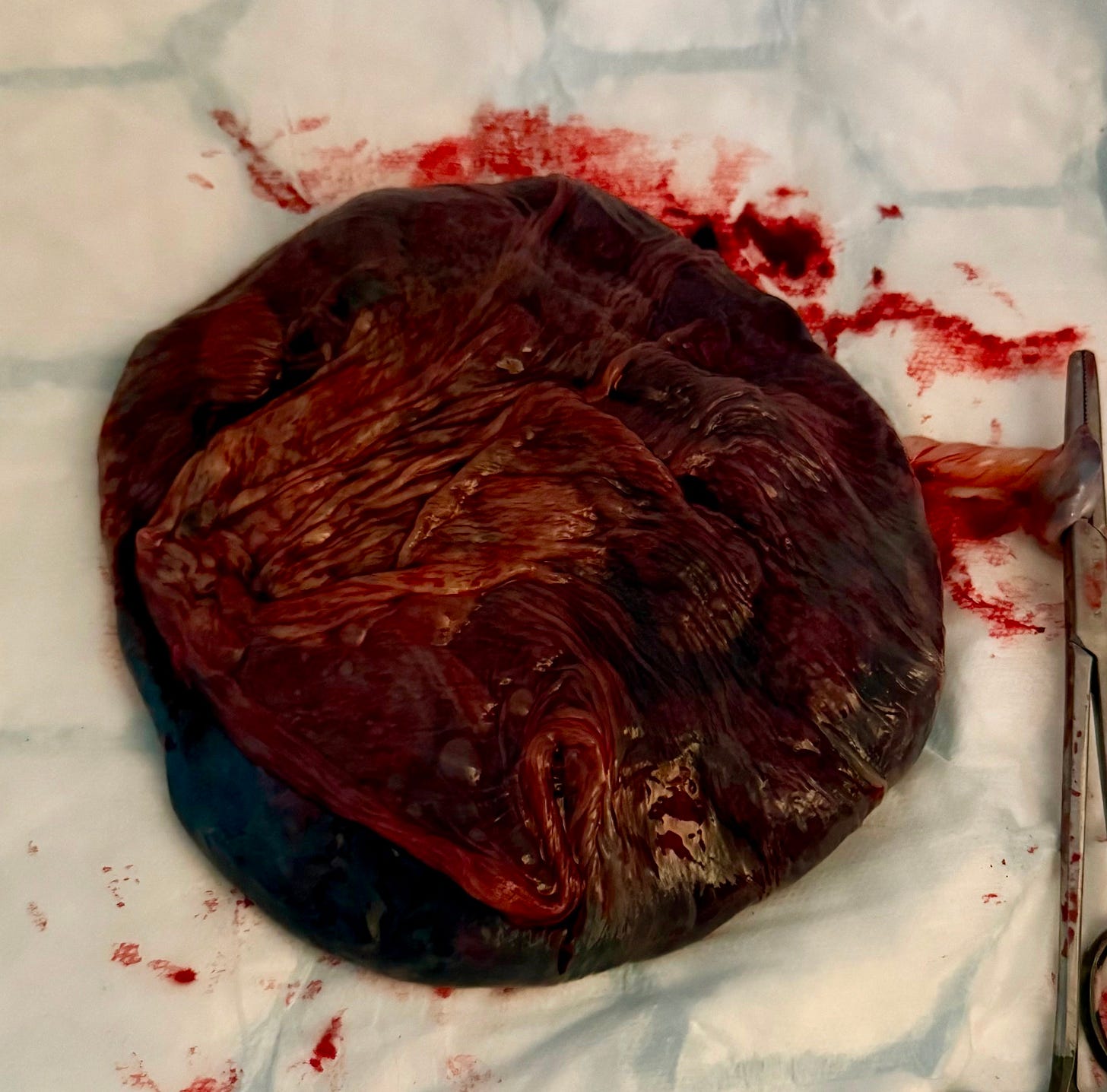Don't count on artificial wombs
They probably won't solve the birth rate challenge
**Warning: this post includes a photograph of a human placenta, which some may prefer not to see.**
I am often asked about reproductive technology, particularly artificial wombs, and what their effect on birth rates might be. Sometimes the questioner is clearly concerned about the prospect of artificial wombs. But often they are excited, suggesting that this technology could solve the birth rate challenge. But social and ethical considerations aside, I am not counting on artificial wombs to close the birth gap and below I explain why.
Replicating human gestation is very hard.
When people discuss artificial wombs, they are often thinking of a device in which a human baby might fully gestate in, all the way from fertilised egg to birth. But creating an ‘end-to-end’ artificial womb is tremendously difficult. In part this is because, as was first explained to me by scientist and author Ruxandra Teslo, human pregnancy has several characteristics that make it extremely challenging to replicate.
The most commonly cited of these comes with a host of challenges for end-to-end artificial wombs: our highly ‘invasive’ placentas, which grow deeply into the wall of womb. This is unique to human and other hominid pregnancies and means the placenta comes directly into contact with the mother’s blood. Because the placenta is made from the baby’s DNA, not the mother’s, there is a complex immune system response that prevents the mother’s body from attacking the placenta. If this fails and the mother’s immune system begins to reject the placenta, this can lead to pre-eclampsia, a very serious pregnancy complication dangerous to mother and child.
There is also a great deal we do not yet understand about human pregnancy, including what actually triggers childbirth to begin (the main theory is that baby secretes a hormone that kickstarts labour). Other things we don’t know include: the cause of pre-eclampsia; why human pregnancies vary in length to the extent that they do (up to five weeks); why morning sickness happens; and why it is that some women report pregnancy temporarily improving chronic health conditions like asthma and even multiple sclerosis.
The artificial wombs that are now nearing human trials are not attempting to replicate the complex chemical processes of pregnancy and host a baby from fertilised egg to birth. Instead, artificial wombs like the EXTrauterine Environment for Neonatal Development (EXTEND) aim to provide a safe place for premature babies to continue growing and preparing for the outside world.
In 2017, EXTEND successfully kept eight premature lambs alive for four weeks, during which time the lambs continued to develop. Currently, babies born before 24 weeks have a less than 50% chance of survival and artificial wombs that can help save the lives of these babies are urgently needed.
As it stands now, human pregnancy is something of a black box and regulatory barriers make it hard for research to change that. One such research barrier is the ‘14 day rule’, a guideline adopted in many jurisdictions, including the UK, India, the US, Canada and Japan. The rule means embryos can only be cultured for research for 14 days. We may in the coming years see this restriction loosen – UK regulator the Human Fertilisation and Embryology Authority has recently recommended that this period be doubled to 28 days – but we cannot be certain that this will be the case.
Conclusion
Though a world in which end-to-end artificial wombs exist and are perhaps even routinely used by ordinary people may lie in our future, we are not on the brink of developing this technology.
But the birth rate challenge is happening today. People are having fewer children than they want right now and we are experiencing all the negative social and economic effects of that. As scientists continue their vital work of developing artificial wombs that can save the lives of premature babies, the focus for policymakers should be on alleviating barriers to research where there is a strong ethical case for doing so, and on improving the access of ordinary people to conventional reproductive technology like IVF.
Phoebe
Further reading
See this fascinating Guardian article to learn about how doctors attempt to save the lives of the most premature babies today, with significant global variation in the medical protocols that have developed.
In an article for Works in Progress, Aria Babu makes the ethical case for artificial wombs and explains some of the barriers to developing them.
For Asterisk Magazine, Sarah Constantin explains the challenges that researchers attempting to develop artificial wombs are yet to overcome.
Ruxandra has an interesting piece in Works in Progress on emerging fertility technologies and what they might mean for how women live their lives.




I thought this article raised some of the important legal and ethical issues as well. https://www.scientificamerican.com/article/it-is-too-soon-for-clinical-trials-on-artificial-wombs/